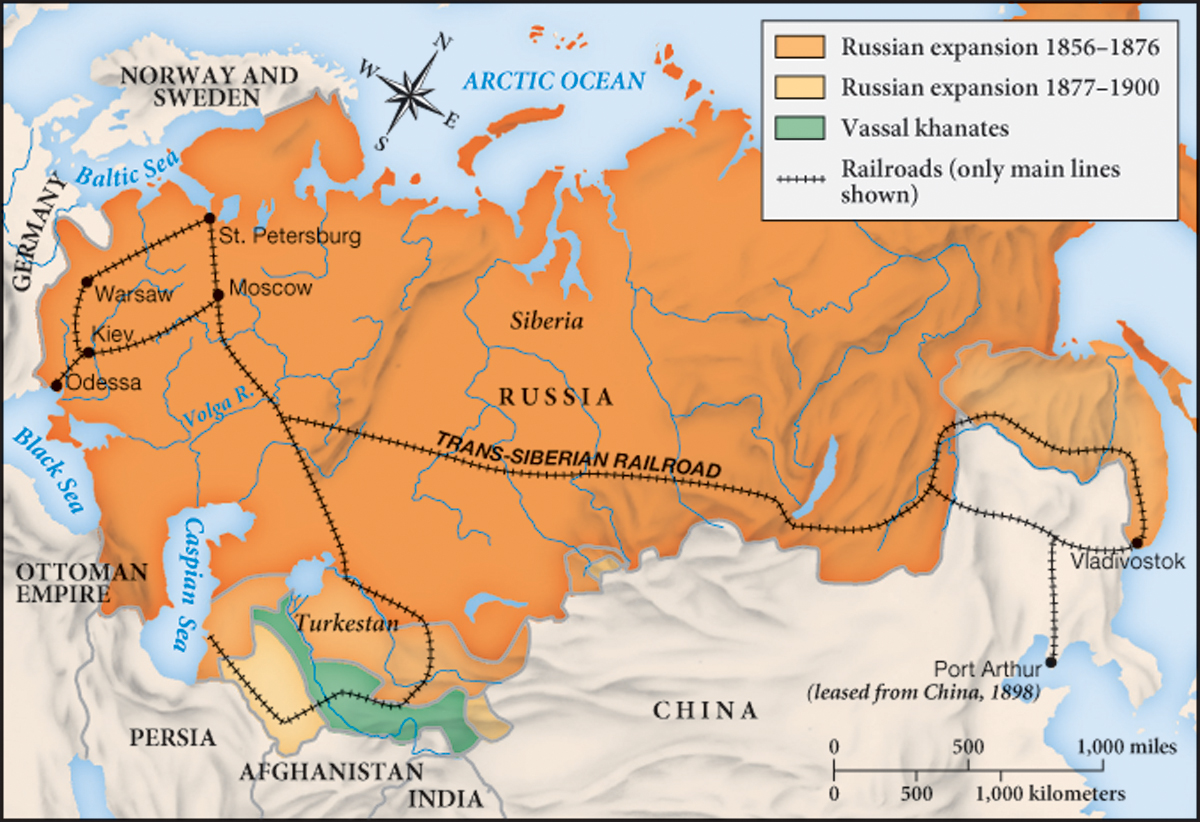Acquiring Territory in Asia
Printed Page 750
Important EventsAcquiring Territory in Asia

The expansion of imperial power from the 1870s on was occurring around the world, not just in Africa. Much of Asia, with India as the centerpiece, was integrated into Western empires. At the same time, resistance to outside domination was also growing: the educated Indian elite in 1885 founded the Indian National Congress. Some of its members welcomed opportunities for trade, education, and social advancement. Others, however, challenged Britain’s right to rule India at all. In the next century, the Indian National Congress would develop into a mass movement.
To the east, British military forces took control of the Malay peninsula in 1874 and of the interior of Burma in 1885. In both areas, political instability often threatened secure trade. The British depended on the region’s tin, oil, rice, teak, and rubber as well as on its access to the numerous interior trade routes of China. British troops guaranteed the order necessary to expand railroads for more efficient export of raw materials and the development of Western systems of communication.
The British added to their holdings in Asia partly to counter Russian and French annexations. For years, Russia had been absorbing the small Muslim states of central Asia, including provinces of Afghanistan (Map 23.2). Besides extending into the Ottoman Empire, Russian tentacles reached Persia, India, and China, often encountering British competition. By the thousands land-hungry Russian peasants moved to these regions, with the Trans-Siberian Railroad (1891–1916) later feeding hundreds of thousands more to Siberia. France meanwhile used the threat of military action to negotiate favorable treaties with Indochinese rulers, creating the Union of Indochina from the ancient states of Cambodia, Tonkin, Annam, and Cochin China in 1887 (the last three now constitute Vietnam). Laos was added to Indochina in 1893.
